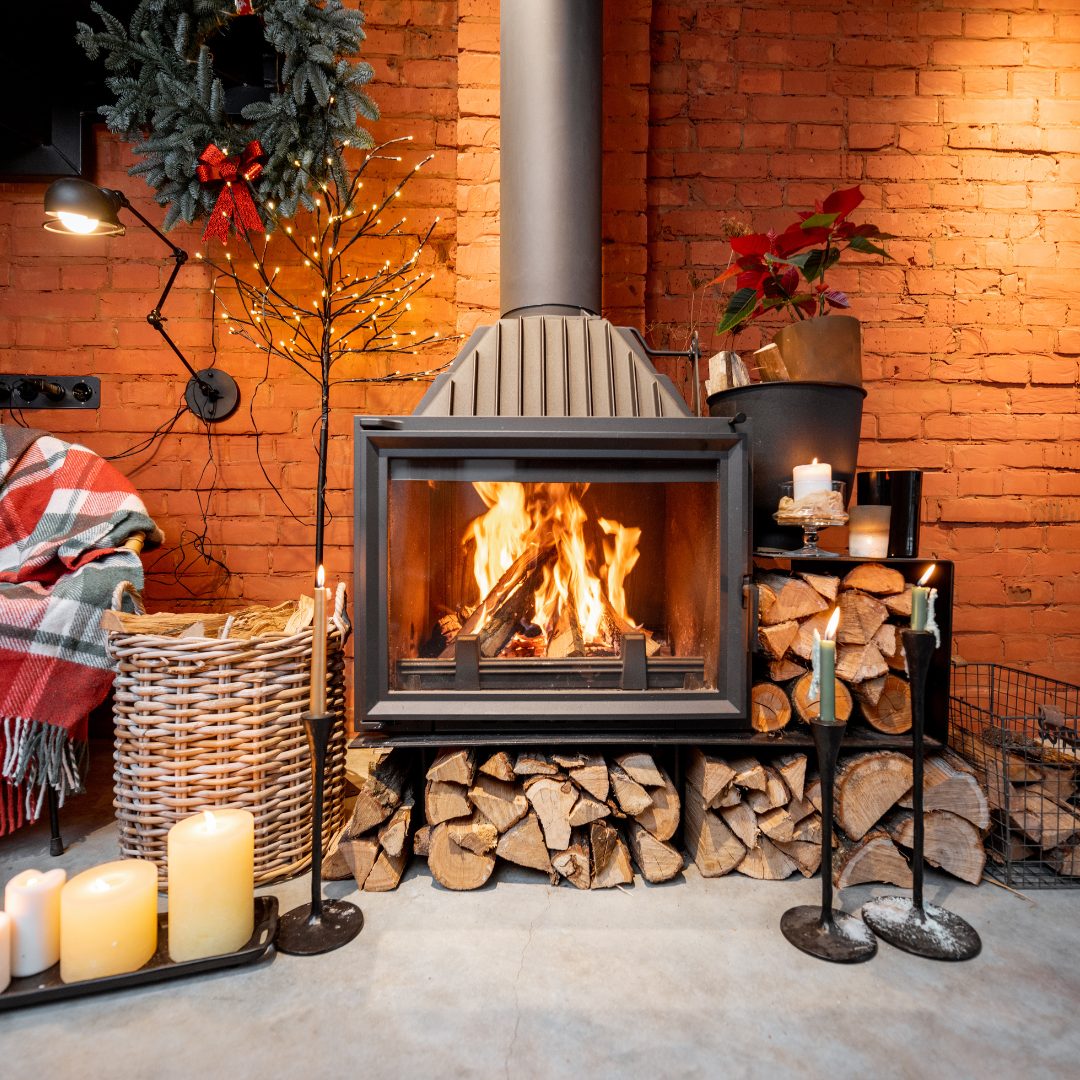While winter brings the holidays, sweaters and scarves, and cozy nights curled up by the fire, this blustery season also brings higher heating costs. Want to know the cheapest way to heat a house and how to make it as energy-efficient as possible?
I am a local mortgage broker serving Omaha, Papillion, La Vista, Bellevue, and all of eastern Nebraska. If you have questions on the Omaha housing market I’m happy to have a conversation with you.
1. Take advantage of your fireplace
Wood fireplaces are one of the cheapest ways to heat a house because they use a renewable resource, wood, which is readily available.
Though building a fire can be a cheap and efficient way of heating your home, if you don’t use your fireplace, be sure to keep the damper closed. Leaving the damper open is like leaving a 48-inch window wide open during the winter and can add up to hundreds of dollars in energy costs each winter.
Pro tip: Chimney sweep service company, The Floo Network shares, “Updating your old fireplace to a wood stove insert or fireplace retrofit is a great way to improve your home’s heating efficiency. Heated air from your home can escape up the chimney with traditional fireplace designs. With a wood-burning upgrade, you can enjoy improved performance, reliability, and safety while saving money on your heating costs.”
2. Use a space heater effectively
There are a few things you can do to make your space heater more effective. By increasing the thermostat setting on your central heating system, the space heater won’t have to work as hard. You can also use a fan to help circulate the heat from the space heater. Another tip is to ensure the space heater is the right size for the room you’re trying to heat. Lastly, place the space heater in the correct location – not close to any furniture or walls.
3. Check the vents
Another tip to decrease heating costs is to clear your vents. If they are on the floor, make sure they are not blocked by furniture or rugs. This will keep your heater from working overtime or sending heat to only one part of your home. Be sure to close the vents in rooms you don’t use and shut the door to those rooms. You can go one step further and block the bottom of the door to unused rooms to keep warm air from escaping parts of the house you want warm. Air return vent covers are another easy and affordable way of redirecting heat to your desired living space.
4. Lower the water heater temperature
Monitoring your water usage is a great way to lower your heating costs during the winter. Small changes, such as taking shorter showers instead of baths, not letting the water run, and using cold water for laundry, can result in big savings.
Additionally, be sure to lower the temperature of your water heater; Energy.gov claims that you can save 3-5 percent on your heating bill for every 10 degrees that you reduce your water heater, which shouldn’t exceed a maximum of 120 degrees.
5. Get a smart thermostat
A smart thermostat is a thermostat that can be controlled remotely by a user through a mobile app or web interface. Many different smart thermostat brands are available on the market, each with its unique set of features and benefits. Some of the most popular brands include Nest, Ecobee, Honeywell, and Emerson. Each brand offers different features and benefits that may appeal to different people. Some of the key benefits of owning a smart thermostat include saving money on your energy bill, controlling your home’s temperature from anywhere, and receiving alerts if your home’s temperature changes.
Smart thermostats typically cost between $100 and $250. Some more popular brands, such as Nest and Ecobee, tend to be on the higher end of that price range.
6. Caulk and weatherstrip doors and windows
If you’re feeling chilly because warm air is escaping through gaps underneath your doors, try this quick fix: roll up a hand towel and place it at the base of the door. If you’re crafty, you could even make a DIY draft snake.
Otherwise, caulking and weatherstripping doors and windows can lower your energy bills by sealing the gaps around doors and windows. This will help to keep the warm air inside your home and the cold air outside.
If you’re unsure if your windows and doors are drafty, an easy way to check is by holding a candle near the frame and watching to see if it flickers. Once you’ve identified any air leaks, apply rubber weatherstripping to large gaps and fill smaller areas with caulk.
Other useful links
- How to improve your credit
- The 20% down rule on conventional
- What is Escrow?
- How is income calculated?
- Why your assets matter
- Mortgage Calculator
- Is Credit Karma accurate?
- FHA vs Conventional, which is better?
What To Do Next





